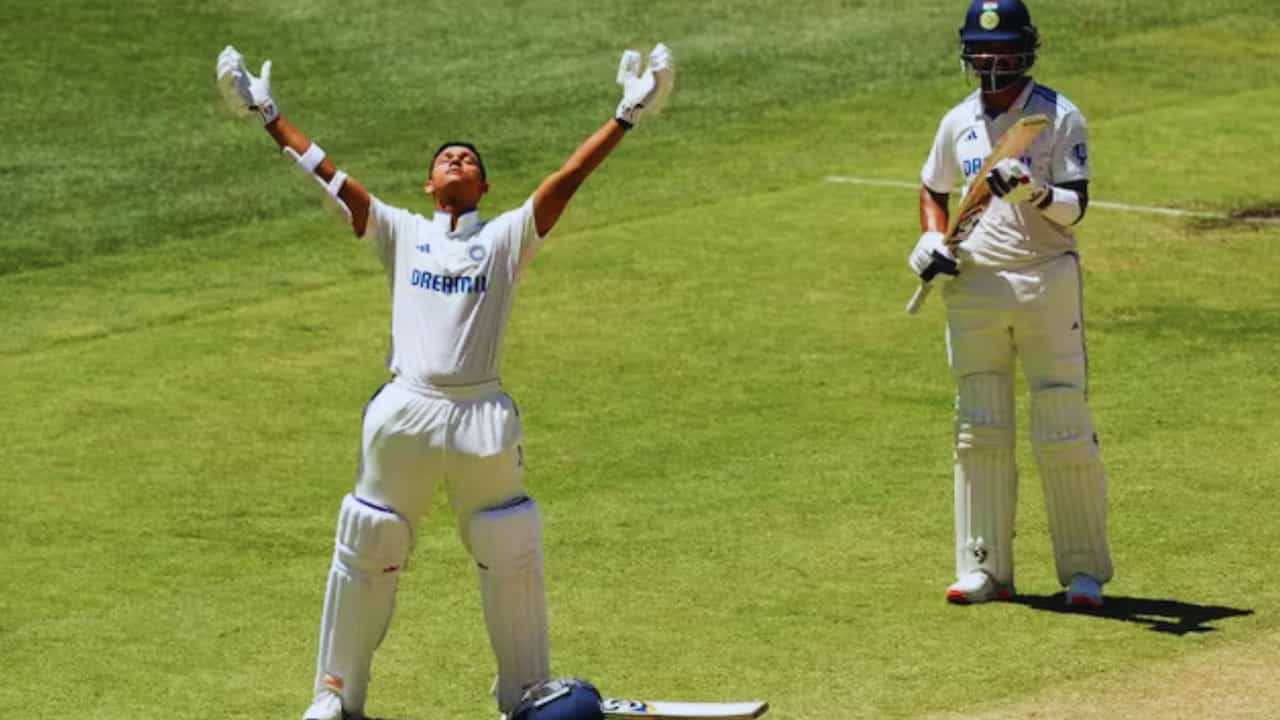From Zero to Hero: Jaiswal’s Perth Masterpiece Rewrites Cricket History
In a dramatic display of talent and resilience at Perth’s Optus Stadium, Yashasvi Jaiswal turned a first-innings duck into a magnificent 161, leading India to a commanding position against Australia in the first Test of the Border-Gavaskar Trophy.
The 22-year-old batting sensation joined an elite club of cricketers, becoming only the eighth player in Test history to bounce back from a first-innings zero to score over 150 runs in the second innings. His transformation was remarkable, showing a maturity beyond his years in the face of Australia’s world-class bowling attack.
The young opener’s innings was a masterclass in adaptation. After his early dismissal in the first innings, Jaiswal made quick but crucial adjustments to his technique, playing closer to his body and scoring more runs square of the wicket when facing the new ball. His confidence grew as the innings progressed, eventually leading to a record-breaking performance that included three towering sixes and 15 boundaries.
Virat Kohli added to India’s dominance with an unbeaten century, his seventh on Australian soil. The former captain’s knock of 100 not out displayed calculated aggression, featuring eight fours and two sixes. Together with Jaiswal, they pushed India’s second innings total to a commanding 487-6 declared.
The partnership between Jaiswal and KL Rahul deserves special mention. They set a new record for India’s highest opening partnership in Australia, surpassing the previous mark of 191 set by Sunil Gavaskar and Kris Srikkanth at the SCG in 1986.
The drama intensified in the final session when Jasprit Bumrah, standing in as captain, delivered a spell of fast bowling that left Australia reeling at 12-3.
His figures of 2-1 included the crucial wickets of Nathan McSweeney and Marnus Labuschagne, both falling to lbw decisions. The hosts now face the daunting task of chasing down 522 runs or batting out two full days to save the Test.
What makes Jaiswal’s performance even more impressive is his approach to the Australian bowlers. In a moment that captured headlines, he was heard telling Mitchell Starc he was “coming on too slow” – a bold statement backed up by his batting prowess. His ability to combine defense with aggression was evident in his 62 leaves against the new ball, showing remarkable patience when required.
The match has also highlighted a shifting dynamic in Test cricket. Under coach Gautam Gambhir, India has shown a willingness to be more aggressive in their approach, declaring their innings to give their bowlers enough time to secure victory. This strategy paid immediate dividends, with Bumrah’s late spell reducing Australia to its current predicament.
Australia’s troubles were compounded by captain Pat Cummins’s decision to promote himself as nightwatchman, which backfired when he edged Mohammed Siraj to second slip. With two days remaining and the pitch showing signs of variable bounce, India appears well-positioned to take a 1-0 lead in the series.
Looking ahead, Australia’s hopes rest heavily on the shoulders of Usman Khawaja and Steve Smith. They face not only the challenge of a deteriorating pitch but also a refreshed Indian bowling attack led by the in-form Bumrah.
The current highest successful fourth-innings chase in Test history is 418-7, set by the West Indies against Australia in 2003. This makes India’s target of 522 appear nearly insurmountable.
For Jaiswal, this innings marks a personal milestone and potentially a defining moment in his career. As the Perth crowd rose to applaud his exit, it was clear they had witnessed something special – a young talent announcing himself on one of cricket’s most challenging stages.
